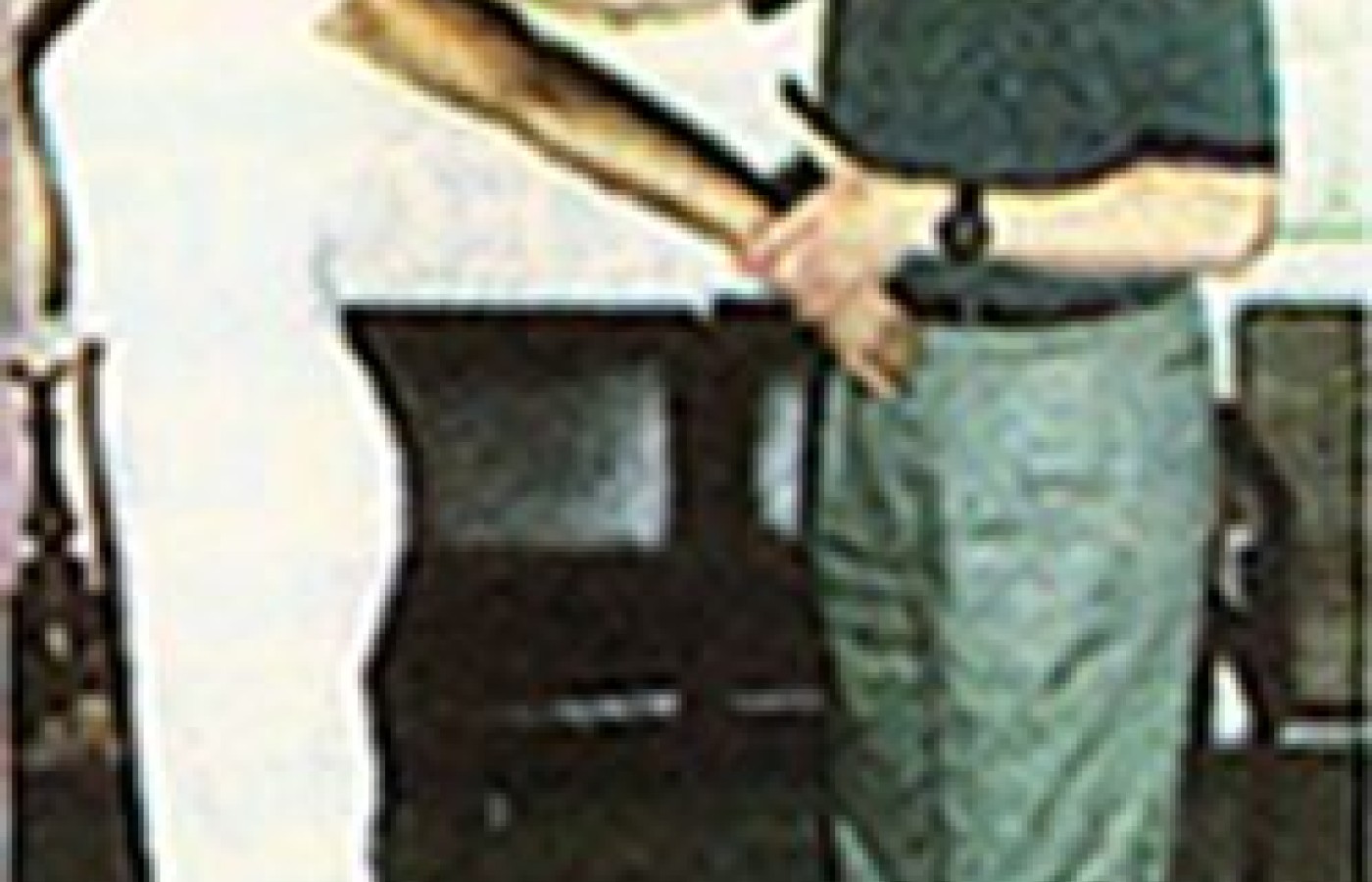Recent laws in New Jersey and California represent a disturbing trend that will negatively impact a practice’s ability to collect monies from patients, as well as expose them to significant penalties if the practice does not follow the mandatory guidelines to a T. Please be aware that a similar law may be coming to your state. The time to act is before the law is passed.
A New Test for a Weak Deltoid
One of the problems in testing for a weak deltoid is the synergistic effect of the rotator cuff muscles which may mask deltoid insufficiency. Hertel, Lambert and Ballmer1 created what they call the deltoid extension lag sign for determining deltoid weakness due to an axillary nerve lesion. First, the examiner elevates the patient's arm to full passive shoulder extension and allows the shoulder to relax to a position of submaximal extension to avoid elastic recoil in the shoulder (see Figure 1). The patient is then asked to maintain this position. A positive sign is indicated by a lag or angular drop (see Figure 2).

[Figure 1: In the first step of the deltoid extension lag sign, the examiner elevates the patients's arm and allows the shoulder to relax, avoiding elastic recoil in the shoulder.]
Hertel et al.1 record the lag to the nearest 5o and retests and measures to determine the progress of neural recovery. This test may be invalidated by a capsular contraction that would not allow full passive motion. Both arms can be tested together to compare sides. In the article,1 the authors recommended testing with the patient in the seated position.

[Figure 2: A lag or angular drop by the patient could indicate deltoid weakness.]
Anterior deltoid wasting due to axillary nerve damage can be evaluated on inspection by noting a flattening of the deltoid muscle; a squaring of the lateral acromion; the prominence of the acromion; and abnormal protrusion or flattening of the greater tuberosity. Atrophy of the deltoid may also indicate dislocation, instability or impingement.
An entrapment syndrome known as the quadrilateral space syndrome may occur, which results in deltoid weakness. This space is bounded by the teres minor superiorly; the teres major inferiorly; the surgical humeral neck laterally; and the long head of the triceps medially. Within the space is the posterior humeral circumflex artery and the axillary nerve, which supplies the deltoid and teres minor muscles and skin of the posterolateral area of the shoulder and upper arm. Etiology may be due to severe trauma of the upper humerus such as a humeral fracture or dislocation, or a direct blow between the coracoid and the head of the humerus.
Cahill and Palmer2 mention causation due to spontaneous entrapment of the axillary nerve by fibrous bands or muscle within the space. The nerve may be aggravated in the overhear thrower with no particular trauma.3 The patient may complain of atypical pain and paresthesias, especially in the lateral aspect of the upper arm with nondermatomal radiation to the forearm and hand. The muscles within the space will palpate tender. Active shoulder rehabilitation, lateral rotation and extension usually produces pain at the anterior shoulder. EMG, nerve conduction and neurologic examination is negative.3
Confirmation by subclavian arteriogram is sometimes necessary. Seventy percent of patients showing occlusion of the posterior humeral circumflex artery are able to live with the problem without surgical decompression.4 Active release technique on the involved muscles is the manual treatment of choice. Stretching in internal shoulder rotation and horizontal adduction is beneficial, along with posterior cuff strengthening.
References
- Hertel R, Lambert SM, Ballmer FT. The deltoid extension lag sign for diagnosis and grading of axillary nerve palsy. J Shoulder & Elbow Surgery 1998;7(1):97-108.
- Cahill BR, Palmer RE. J Hand Surg 1983;8:65.
- Baker CL, Liu SH, Blackburn TA. Neurovascular compression syndromes of the shoulder. In: Andrew JR, Wilk KE. The Athlete's Shoulder. New York: Churchill Livingstone, 1994, p. 261-273.
- Pianka G, Hershman EB. Neurovascular injuries. In: Nicholas JA, Hershman EB (eds.) The Upper Extremity in Sports Medicine. St. Louis, MO: Mosby, 1990, p. 691-722.
Warren I. Hammer, MS, DC, DABCO
Norwalk, Connecticut



